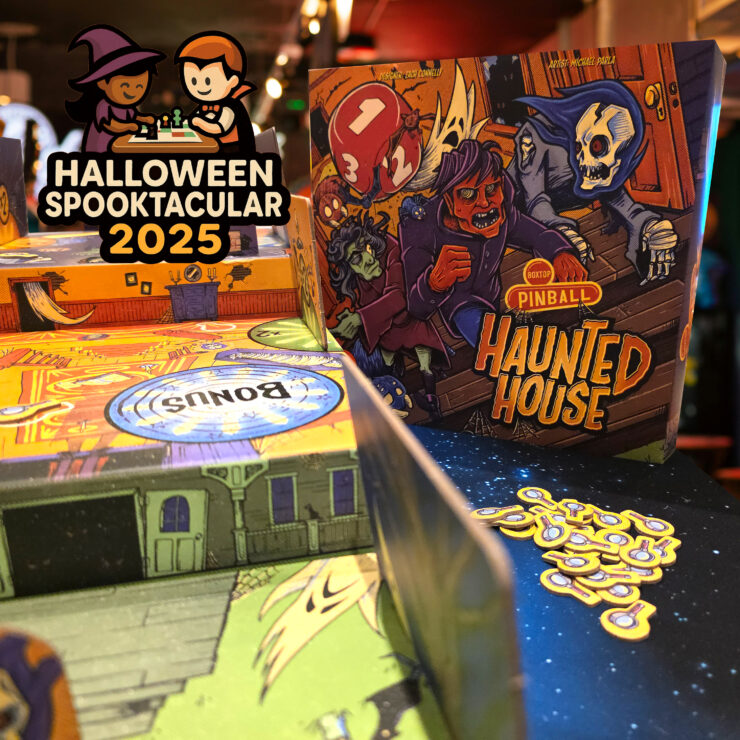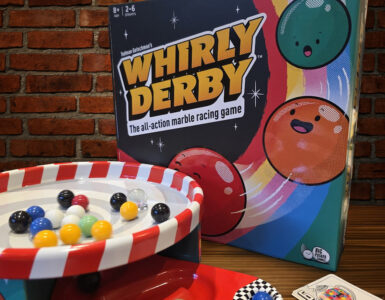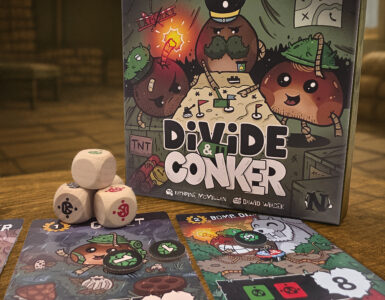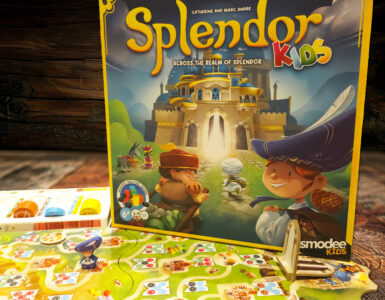Boxtop Pinball: Haunted House is a really unusual game. I wasn’t quite sure what exactly it was when I first saw it about a year ago in a shop, but I knew I had to own it. While it’s not something we get out regularly, it’s really good fun when we do, and Henry (4) absolutely loves it, as it’s pretty much the main game that he can genuinely beat the rest of the household at.
When you open Boxtop Pinball: Haunted House, you’re met with the box itself transforming into a kind of multi-stage diorama of traps, stands, and areas to gain multipliers. Now, while it calls itself pinball, it’s not really pinball in any traditional sense. Boxtop Pinball is actually a dexterity game where you flick dice down a set of stairs, trying to hit monsters, hit magnifying glasses, and hopefully have your dice land on a good side and in a good zone.
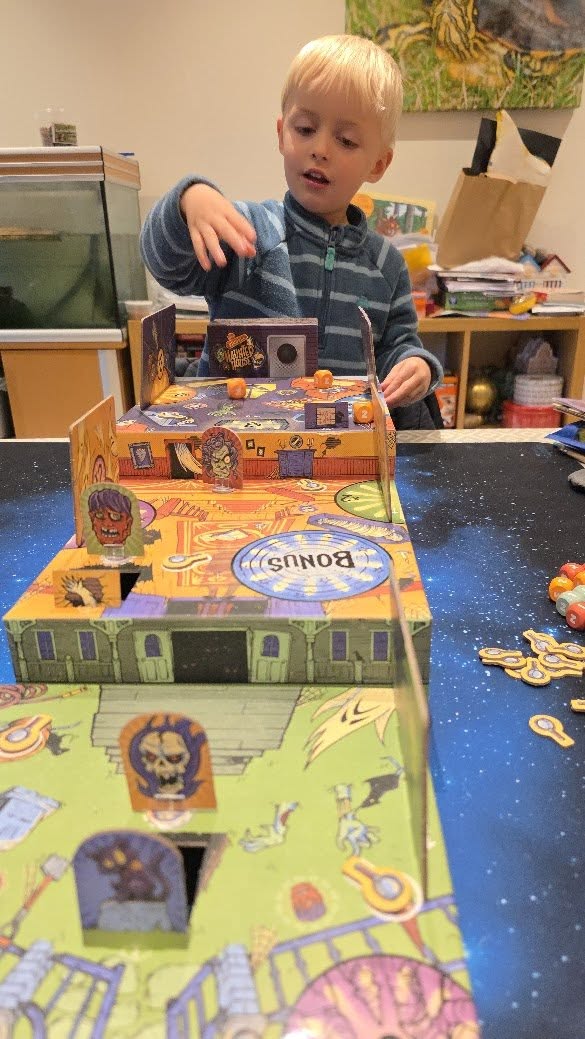
Each player takes four dice to begin with, and you take turns flicking a die from the top all the way down to the bottom. There are multiple ways to gain points. Firstly, there are the magnifying glasses. These are spread throughout the board, and if you knock one out of its little area, you collect it. Each magnifying glass shows a number on its underside, scoring you between one and eight points at the end of the game. They can be surprisingly lucrative and are always a good target to go for. Plus, quite often you can skid past them and pick them up while trying to do other things.
The next way to score is by hitting monsters. There are three monsters in total, and over the course of your four dice, you earn a cross for every monster you hit. If you hit one monster over the course of your round, you get 2 points, two monsters give you 5 points, and if you hit all three, you earn the full 10 points. These are quite a reliable way to score, especially later in the game when players are going for similar targets. Each time you hit one of the monsters, it gets reset and looped back around, meaning even the ones that started near the bottom might end up back near the top.
The real way to get lots of points, however, is through the zones. On the structure, there are multiple multipliers, and if your dice land in these zones, your score gets multiplied by that amount. These can be really lucrative if you can land your dice in them, and obviously, you want your dice to show a three rather than a one!
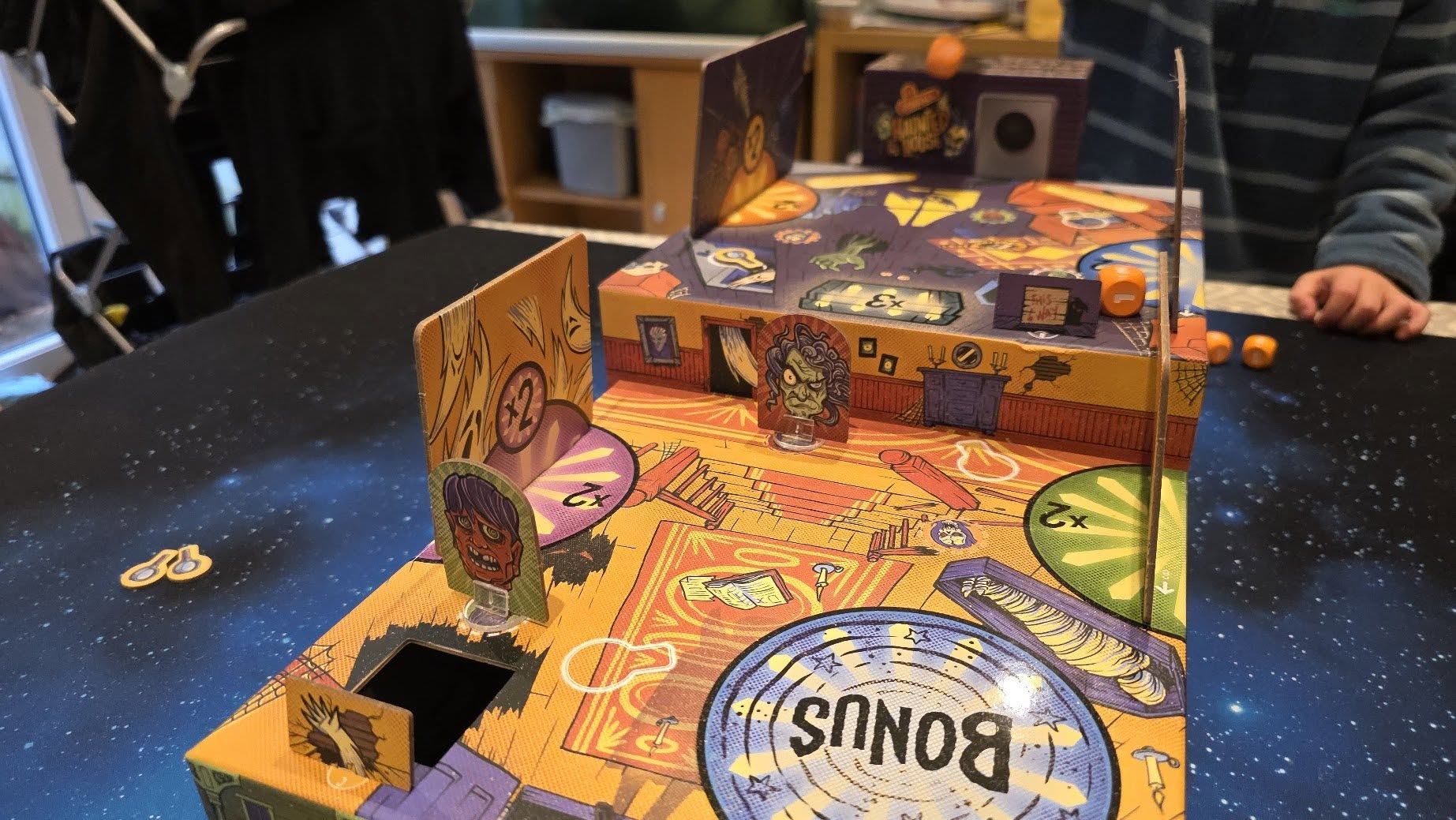
Finally, there’s a bonus spot. If you land your die in the bonus, you get an extra die (up to a maximum of six), which gives you another chance to increase your score.
While flicking is great fun, what really makes Boxtop Pinball: Haunted House interesting is that because players take turns flicking one die at a time, you can hit each other’s dice. Sometimes you’ll knock your opponent’s dice off the edge, and other times you’ll hit them into something good. You can even combo dice into one another, and anything that happens to an opponent’s dice on your turn counts for you, not them.
The game runs over three rounds in total. At the end, you add up all your scores, check your magnifying glasses, and see who’s the winner overall.
The components are surprisingly robust, and the whole thing feels like it will stand up to extended play.
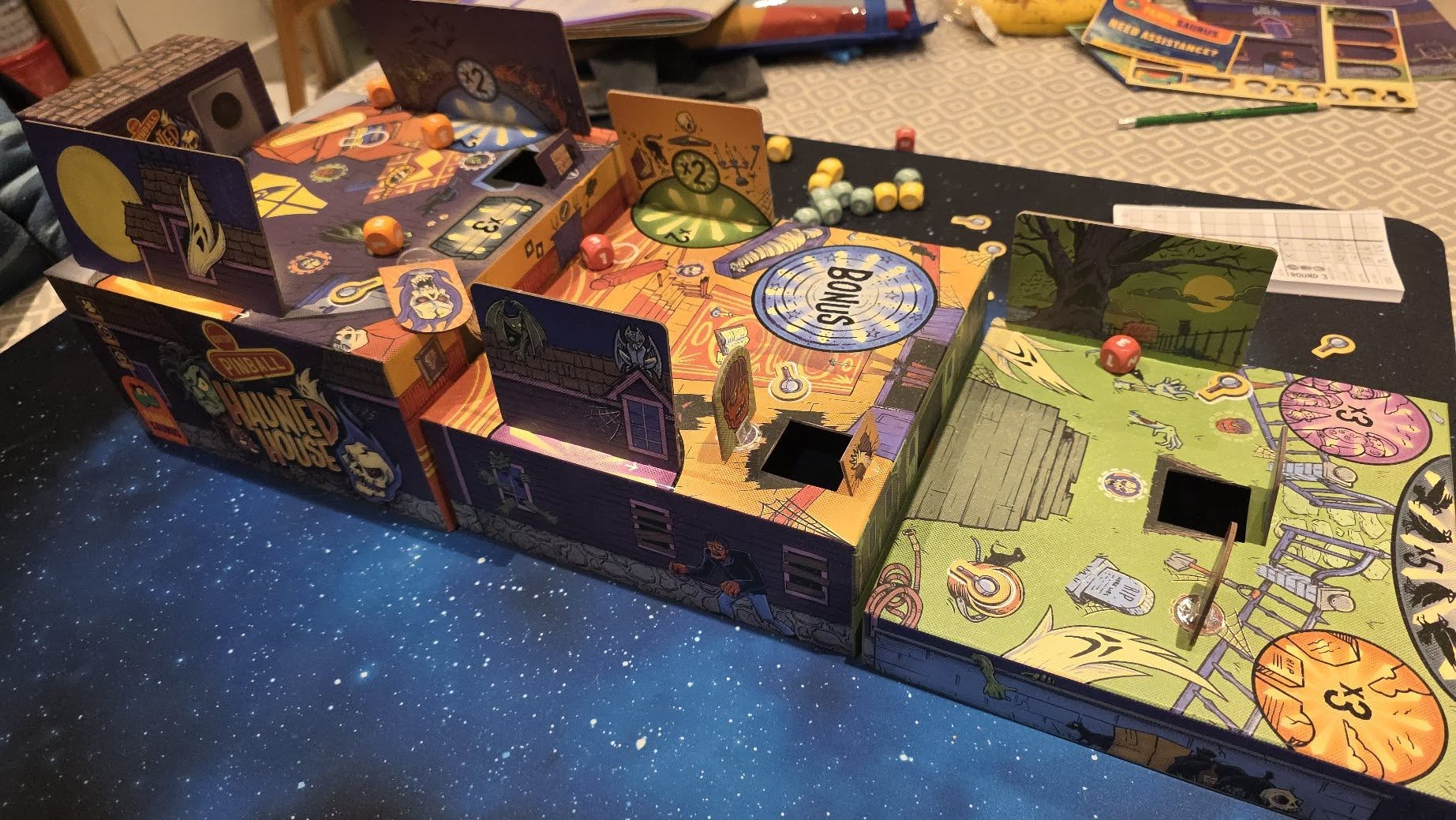
It’s relatively quick but really good dexterity fun. It’s quite tricky but also forgiving, so you can just flick and see what happens, and you’ll still have a good time even if your aim’s not perfect. One of the strangest things about this game is that Henry, who’s four, is by far the best in the house. And that’s not just a one-off — he reliably wins most games we play, and I honestly can’t tell you why! I think maybe it’s because he doesn’t flick as hard, which tends to earn him more consistent points. Equally, sometimes I think his brothers get a bit too competitive trying to knock his dice, but generally speaking, Henry is the undisputed champion of Boxtop Pinball: Haunted House.
It’s not a game I’ll get out all the time, but it’s unique, it’s fun, and it works brilliantly across a massive range of ages. You could probably even play it with a two-year-old, as long as they understand flicking the dice down the track, and you help them count their points. As long as they can take turns and cope with their dice getting bumped, they’ll have a great time.
I’d probably say look at some photos or a video on YouTube first, but if you like dexterity games and particularly light-hearted ones, this might be a really good choice.


